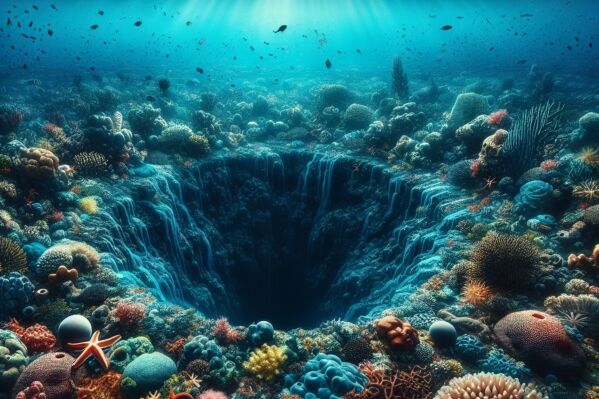Back in 2022, sonar images revealed the presence of numerous strange circular objects on the bottom of Lake Michigan. Researchers recently conducted an investigation into these targets, revealing that these circles are actually giant cavities, although how they were formed remains unclear. Researchers also mentioned that there are still many secrets waiting to be uncovered.
When these cavities were first discovered in 2022, researchers were conducting a mapping mission on the lake bed of the Wisconsin Shipwreck Coast National Marine Sanctuary. This protected area contains 36 known shipwrecks and potentially more. Russ Green, a maritime archaeologist and manager of the sanctuary involved in the mapping project, told Live Science magazine via email that the circular shapes appearing on the map appeared to be naturally formed rather than man-made. These shapes could be depressions in the lake bed, but researchers are not certain.
Green said, “Any new discovery in the Great Lakes region is exciting, but these features are really striking. They are located in deeper water, about 500 feet deep, and as far as we know, they were not known before.”
At the same time that Green and his colleagues were exploring, local shipwreck hunter Brendon Baillod was looking for a sunken cargo ship and also came across these mysterious circles. Baillod stated that to him, these circles appeared to be clearly depressions or pits, with depths ranging from 20 to 40 feet. “We found dozens within our search area,” he said. “Most have irregular shapes with diameters ranging from 500 to 1,000 feet.”
The initial data processing of the mapping exploration caused some delays, but Green, Baillod, and their colleagues ultimately contacted scientists from the Great Lakes Environmental Research Laboratory (GLERL) of the National Oceanic and Atmospheric Administration (NOAA).
This year, the research team conducted a joint survey to examine these circles more closely. On August 21, they used a remotely operated vehicle to confirm that these shapes were massive naturally formed pits. GLERL researcher Steve Ruberg told the Milwaukee Journal Sentinel that scientists estimated there were about 40, but there could be more waiting to be discovered.
Ruberg stated that these pits, like the “perfect circles” on the lake bed about 14 miles southeast of Sheboygan, Wisconsin, extend in a line pointing south toward Port Washington, also located in Wisconsin.
Previously, researchers found similar depressions on the lake bed of Lake Huron at the Michigan-Canada border. Those depressions were eventually confirmed to be sinkholes, generally believed to form when underground water dissolves bedrock from below, leading to the collapse of the surface layer to create cavities, which can occur underwater or on land. As Michigan Lake is situated above limestone, a rock prone to dissolution, Ruberg suggested that the pits on the lake bed could also be sinkholes.
Before further research is conducted, other experts have not yet classified these circular pits as sinkholes. Baillod suggested, “I think a more accurate term for them would be volcanic vents, these vents are formed in deep sediment and could be caused by rising water from below or the escape of trapped hydrocarbons.”
Recent investigations showed that these pits do not have water flowing out, indicating that there is no groundwater circulation beneath the lake bed. However, Ruberg anticipates that researchers will eventually detect some water flow. He mentioned that images and videos of the pits show freshwater shrimp, small fish, and invasive zebra mussels “doing their thing in the dark.”
It is currently unclear what impact and role these pits have on the entire ecosystem of Lake Michigan, but researchers are confident in finding answers. Green stated, “We will continue to explore these pits in the coming years to learn more and understand how they were formed and the role they play in the Lake Michigan ecosystem.”

